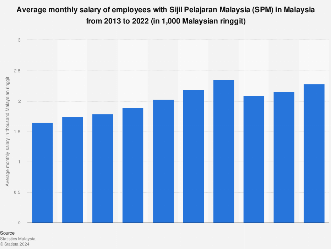Students in Malaysia typically take the SPM (Sijil Pelajaran Malaysia) at ages 17 or 18, marking the end of Form 5.
Table of Contents
Age of Candidates
Sijil Pelajaran Malaysia students are usually about 17 to 18 years of age. This is one of the most important examinations in the Malaysian education system. Not only it decides a student’s future in the higher educational sphere but also their future employment opportunities. Students enter secondary school at the age of 13, and after five years of secondary school education, they are required to sit for their SPM examinations usually at the end of Form 5 of their education. After the exams, students will know their fate by the next two to three months.
The timing of these examinations has a major impact on students’ educational and career paths. For example, students who do well in these exams typically proceed to pre-university level courses or diploma courses. These will then further decide a student’s eligibility for BA or Bsc-level higher education. For example, if a student wishes to get a scholarship, he would put in extra effort in Science and Math subjects in order to gain additional marks, reasoning that his SPM results will hold the greatest sway in scholarship decision-making. Comparing this system to other systems in other countries, students of high school age in the United States are usually around 18 years old. In New York, students this age are required to sit for the New York regents examination which serve a similar function to Malaysian SPM examination. The main differences between the two examinations are, while the Malaysian Sijil Pelajaran Malaysia examination are standardized nationwide the New York regents examinations are not, they will differ greatly from one state to another and even more from 1 district to and other.

Educational Level
The Sijil Pelajaran Malaysia is a pivotal assessment representative of secondary schooling in Malaysia and occurs generally during the last year of equivalent to Form 6 in countries such as the United States and Canada . Indeed, the assessment evaluates a student’s proficiency on various of the subjects taught through the country over five years, commencing from Form 1 to Form 5. Throughout the entire process, students start their secondary education at the age of 13 and generally sit for the examination when they are 17 or 18 years old. The content as well as the difficulty of the Sijil Pelajaran Malaysia is devised in such a way in order to prepare students for either further studies or for pure working purposes.
The evaluation covers a wide range of subjects relevant to the various disciplines available from Bahasa Malaysia, English, Mathematics, Science to other less mandatory programs in arts, commerce as well as technical studies. Therefore, students have the ability to adjust their instruction to some extent based on their future studies or work field. For instance, if the student intends to become an engineer, the student might opt for additional science and mathematics instruction, rather than a student wishing to become a graphic designer focusing more on art and design modules. The importance of the Sijil Pelajaran Malaysia is indeed highly reflected in the country, serving as a prerequisite for most forms of tertiary education or professional training in the country. In addition, success in the examination guarantees or greatly enhances the chance of admission to various educational institution within the country or overseas as well as scholarships.
Oftentimes, parents contemplate the Sijil Pelajaran Malaysia with other, national examinations and wonder how much tutoring they shall invest in, given the heavy reliance on this form of examination. For instance, in the UK students sit for the GCSE examinations rather than more smoothly transitioning into their last years of instruction. However, the GCSE have often been compared in an unofficial way, the Malaysian Sijil Pelajaran Malaysia covers a less broad spectrum of various subjects on a less demanding level.
Timing in Academic Journey
The SPM exam takes place when one is 17 or 18, which implies a period in the Malaysian academic calendar. This time aligns with the exit time of a student from Form 5, final year in Malaysia’s version of high school. It means that the placement of SPM should be a period where students are expected to start pursuing higher education or vocational training. A student would start secondary schooling in Form 1, the age of 13. Form 1 to Form 5 for the next five years then will be a time dedicated to building a student’s foundational knowledge, spread between multiple subjects. The structure of the curriculum will have students learn compulsorily taught subjects including Bahasa Malaysia, English, Mathematics, and other additional Science subjects. The comprehensive educational design is meant to lay the foundation to accumulate knowledge, and mature it into skills over five years. Therefore, when students reach Form 5, they are expected to face the challenges of an in-depth exploration of the content, to be prepared as best as possible for the SPM exams.
SPM examinations tests both core and elective subjects. Electives are mostly influenced by the interests and future career choices of a student, as is offered as an alternative to the general core secondary education examinations. The annual SPM examination period coincides with the stage of a student’s life where they leave the child to become young adults. For many, decisions around this time will affect their future, whether it be which university-preparatory course to take or be accepted into, or just general opportunities in adult life. For those who complete their SPM, opportunities follow, such as the completion of pre-university studies such as the Malaysian Matriculation, Foundation courses, or direct entry into diploma programs in universities before university. These avenues are instrumental in the drive to quality competitive entry. Parents and educators understand this, investing time, money, and resources to be prepared for these examinations. This includes further investments in tuition fees and other paid resources. It is not uncommon for people to spend thousands or even up to 10,000 Ringgit. Comparing this to other education systems like the American high school diploma that is completed at the end of the 12th grade, it serves the same purpose, but the SPM is more examination focused and matured a year earlier. This, thus, implores a harsher education model. The alternative would be to map-out a similar examination model at the end of age 18 or 19 schooling system.

